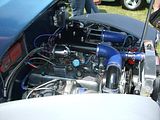Dry Sumps...
Moderator: phpBB2 - Administrators
Dry Sumps...
When building higher performance engines, few people seem to consider drysumping the Rover V8.
Most high performance engines seem to do this for two resons, oil starvation and reducing internal losses.
Is it just (hi) cost that this seems to be rarely considered...or is there really very little power to be clawed back on this engine?
Cheers,
Virgil.
Most high performance engines seem to do this for two resons, oil starvation and reducing internal losses.
Is it just (hi) cost that this seems to be rarely considered...or is there really very little power to be clawed back on this engine?
Cheers,
Virgil.
TVR Griffith 500HC 'Induction Project'
Hi
dry sumping is really a lot of work for gain in very specific areas. It does everything you say, but generally you can get most of the benifit to a lesser extent by other mods that are cheeper and easier. It is only when you start to get to the top end of the performance envelope do you need to dry sump. The other thing specific to the rover is that of all the V8s all the varients are on the small side, unless you are restricted to using a rover then the best power mod is to change it for a bigger engine so it is less common for a rover to end up being tuned that far to warrent dry sumping.
The cost isn't silly, a rebuilt 2nd hand banes pump from the US is about £350 to £450 by you have imported it and lines, again used, can be had for under £10 each, mounting brackets can be made and a pan modified, all in you can probably do it for £600-700 (I think that is about what I have spent on the dry sump set up for my chevy).
As for power gains, probably about 10 to 15 on a high reving V8, 6-8 for a more mundane tune but by you are considering doing it you will have already done the mods that get you 10bhp for less money, the old law of diminishing returns!!
Best regards
Mike
Best regards
Mike
dry sumping is really a lot of work for gain in very specific areas. It does everything you say, but generally you can get most of the benifit to a lesser extent by other mods that are cheeper and easier. It is only when you start to get to the top end of the performance envelope do you need to dry sump. The other thing specific to the rover is that of all the V8s all the varients are on the small side, unless you are restricted to using a rover then the best power mod is to change it for a bigger engine so it is less common for a rover to end up being tuned that far to warrent dry sumping.
The cost isn't silly, a rebuilt 2nd hand banes pump from the US is about £350 to £450 by you have imported it and lines, again used, can be had for under £10 each, mounting brackets can be made and a pan modified, all in you can probably do it for £600-700 (I think that is about what I have spent on the dry sump set up for my chevy).
As for power gains, probably about 10 to 15 on a high reving V8, 6-8 for a more mundane tune but by you are considering doing it you will have already done the mods that get you 10bhp for less money, the old law of diminishing returns!!
Best regards
Mike
Best regards
Mike
poppet valves rule!
Hi Virgil
Another advantage that can be gained from a dry sump set up is the fact that the engine can be set lower in the chassis and thereby the COG of the car is also lower.
Some cars off course need a dry sump system to get the lump under the hood. However, to get the full benefit, a smaller diameter flywheel is usually needed also together with an offset starter drive.
Unless underhood space is the criteria, for a relatively light lump like the RV8 the COG gain is probably not worth the effort but it would be more beneficial to someone racing a heavier cast iron lump.
Regards Denis
Another advantage that can be gained from a dry sump set up is the fact that the engine can be set lower in the chassis and thereby the COG of the car is also lower.
Some cars off course need a dry sump system to get the lump under the hood. However, to get the full benefit, a smaller diameter flywheel is usually needed also together with an offset starter drive.
Unless underhood space is the criteria, for a relatively light lump like the RV8 the COG gain is probably not worth the effort but it would be more beneficial to someone racing a heavier cast iron lump.
Regards Denis
-
ian.stewart
- Forum Contributor

- Posts: 2419
- Joined: Sat Nov 18, 2006 1:59 pm
- Location: Far Far south, any further south and my feet are wet
I can probably get a dry sump pan cast, as a un-machined item for around £150 including pattern making
if you are using a 4.6 the cast part of my sump is about as tight as you can get it, then you will need a 45mm gully down the middle to drain the oil into and fit pipework, to, as Dennis says, to gain fill benefit, of the sump, the flywheel needs to be a small dia item with a multiplate clutch, it then starts getting expensive as you now need custom or heavily modified bellhousing to mount the starter,

if you are using a 4.6 the cast part of my sump is about as tight as you can get it, then you will need a 45mm gully down the middle to drain the oil into and fit pipework, to, as Dennis says, to gain fill benefit, of the sump, the flywheel needs to be a small dia item with a multiplate clutch, it then starts getting expensive as you now need custom or heavily modified bellhousing to mount the starter,

THE SMOKING GNU
12.604 with an old boiler of a RV8 and no gas
WHY are there so many IANS on this site???????
12.604 with an old boiler of a RV8 and no gas
WHY are there so many IANS on this site???????
"I can probably get a dry sump pan cast, as a un-machined item for around £150 including pattern making"
Can you do one for a chevy? I have a couple of wrong ones that can be used for taking measurments off .
I have a couple of wrong ones that can be used for taking measurments off .
Any chance you could do a powerglide deep pan aswell? again I can supply a steel standard pan for measurments
Best regards
Mike
Can you do one for a chevy?
Any chance you could do a powerglide deep pan aswell? again I can supply a steel standard pan for measurments
Best regards
Mike
poppet valves rule!
-
ian.stewart
- Forum Contributor

- Posts: 2419
- Joined: Sat Nov 18, 2006 1:59 pm
- Location: Far Far south, any further south and my feet are wet
Thanks for the replies guys. I guess it makes sense. The engine I looking at that made a big power increase was very high reviving v8
Impressed though that it could be done for relatively little though. Pan not an issue, just the pump pipes and fittings.
Mike, do you have a regular source of rebuilt pumps, and how long do they last...I presume a fair while?
Also, are the any links to how this would be connected up in lieu of the original original set up?
Impressed though that it could be done for relatively little though. Pan not an issue, just the pump pipes and fittings.
Mike, do you have a regular source of rebuilt pumps, and how long do they last...I presume a fair while?
Also, are the any links to how this would be connected up in lieu of the original original set up?
TVR Griffith 500HC 'Induction Project'
Hi
My pump came off US e-bay, I spent about 3 months watching listings and checking photos to find a good one at a good price, there are about 4 of 5 guys who get kit off nascar teams and refurbish them before selling them on. Look for posters who will put up photos looking down into the pump ports don't just go for the one that looks the newest. They are simple pieces of kit, modular in design and all the spares are readily available. The nascar teams run on big budgets so the pumps get changed routinely at the end of the season, mine can't have been more than a season old when I got it.
As for life, they run for in Nascar, 100 to 500 mile races at 6500 to 8000 revs on the engine, 15 to 20 races a season, and they do about a season on a couple of rebuilds. The bodies won't wear out in most UK club level racing in twenty years, you will probably have to change the internals every 3 or 4 seasons, shafts and bearings every two or three rebuilds. Mine is going onto my chevy which will be in the slingshot I am building, for me it will be fit and forget.
One thing to remember is that a 5 stage banes pump is about 10" long (11" with the pully on the front), 3.5" diamiter and has pipes comming out of the top and bottom, mounting it onto the engine without it getting in the way of the engine mounts can be a challange! I am mounting the engine on an engine plate so I don't have to worry about engine mounts but I still have a few other things to fit on the front!
You can do alot of tuning for £600-700 pounds, and really you only get benefit if you are subjecting the engine to constant high revs and high G loads, or have limmited cooling from the water jacket and are planning to use the oil system to add cooling to the engine (especislly the top end), which is the case in my build also I will be running methanol and will be changing the oil more often than on a normal engine, so in my case life will be easier with theis set up.
Best regards
Mike
My pump came off US e-bay, I spent about 3 months watching listings and checking photos to find a good one at a good price, there are about 4 of 5 guys who get kit off nascar teams and refurbish them before selling them on. Look for posters who will put up photos looking down into the pump ports don't just go for the one that looks the newest. They are simple pieces of kit, modular in design and all the spares are readily available. The nascar teams run on big budgets so the pumps get changed routinely at the end of the season, mine can't have been more than a season old when I got it.
As for life, they run for in Nascar, 100 to 500 mile races at 6500 to 8000 revs on the engine, 15 to 20 races a season, and they do about a season on a couple of rebuilds. The bodies won't wear out in most UK club level racing in twenty years, you will probably have to change the internals every 3 or 4 seasons, shafts and bearings every two or three rebuilds. Mine is going onto my chevy which will be in the slingshot I am building, for me it will be fit and forget.
One thing to remember is that a 5 stage banes pump is about 10" long (11" with the pully on the front), 3.5" diamiter and has pipes comming out of the top and bottom, mounting it onto the engine without it getting in the way of the engine mounts can be a challange! I am mounting the engine on an engine plate so I don't have to worry about engine mounts but I still have a few other things to fit on the front!
You can do alot of tuning for £600-700 pounds, and really you only get benefit if you are subjecting the engine to constant high revs and high G loads, or have limmited cooling from the water jacket and are planning to use the oil system to add cooling to the engine (especislly the top end), which is the case in my build also I will be running methanol and will be changing the oil more often than on a normal engine, so in my case life will be easier with theis set up.
Best regards
Mike
poppet valves rule!
I don't think your ever even get 2Gvirgil wrote:Wotland, no offence taken as I too don't regularly exceed 3 to 4 G on the road for sustained periods
(Was only thining of it for a internal loss saving perspetive....)
Mike, again, thanks for the info.
I run slicks on my TVR tasmin racer, and most G I've had is just over 1.4G I'm not running aero so don't think I'll ever go past 1.5G I think the new Ferrari GT racer runs at 1.8G.
I've got a SPA digital oil pressure gauge, that's also connected to a 10MHz data logger and never had and oil pressure loss, and I'm running a standard 4.6 steal sump.
On a side note a big advantage of a dry dump setup is your not relying on the poor design of the current oil pump. esp. as part is built into the cover, so if it's badly damaged you need a new cover and pump housing and to buy all the part required new, would now cost £700+
Current V8 car TVR 400SE 240 BHP
Current Project TVR Tasmin Race, with 3.9 running at 230 BHP
Currently building a 4.6 300 BHP Xbolted Engine for it. Solid Lifters and Group A rockers, Stange 4 heads, Pocketed piston, fully balanced.
Current Project TVR Tasmin Race, with 3.9 running at 230 BHP
Currently building a 4.6 300 BHP Xbolted Engine for it. Solid Lifters and Group A rockers, Stange 4 heads, Pocketed piston, fully balanced.
Agreed...I was being flippent...hence the wink. It's really not for oil starvation, though that's obviously it's main benefit.TVRleigh wrote:I don't think your ever even get 2Gvirgil wrote:Wotland, no offence taken as I too don't regularly exceed 3 to 4 G on the road for sustained periods
(Was only thining of it for a internal loss saving perspetive....)
Mike, again, thanks for the info.
TVR Griffith 500HC 'Induction Project'
-
Sunbmw
- Helpful or Confused

- Posts: 51
- Joined: Wed Mar 10, 2010 11:48 pm
- Location: Ashbourne, Derbyshire.
Hi fellas, opinions on this please.
Properly made dry sump pan and modified cover, made from a modified standard pan, but looks very well made in the same ilk as a BDA dry sump would be made, but, it only has one scavence port, will this be enough? Most engines I have built hav had at least two scavenges. Secondly, the cover has had the pump removed, and the port drilled and a oil adaptor fitted for the pressure inlet, in my eyes, as long as this enters the gallery somewhere, it's ok, this is exactly where the std pump would feed anyway so looks good in my eyes.
Look forward to comments................
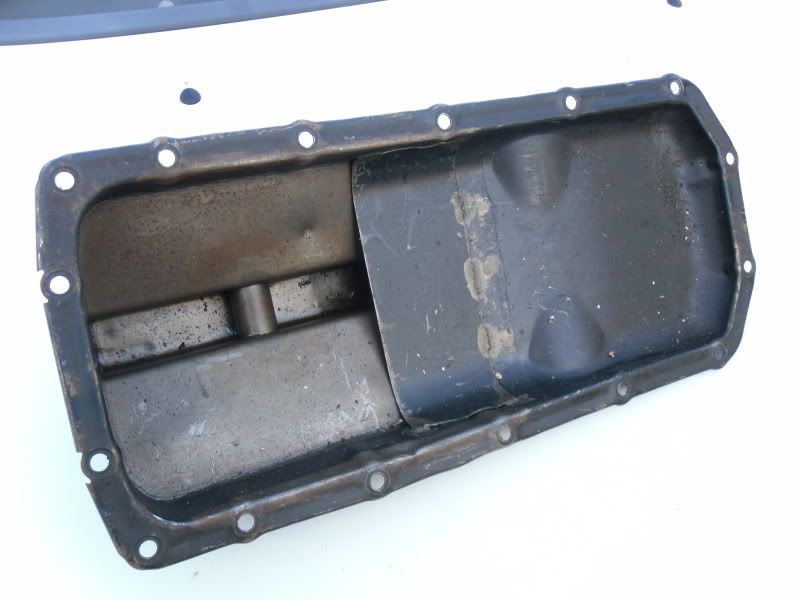
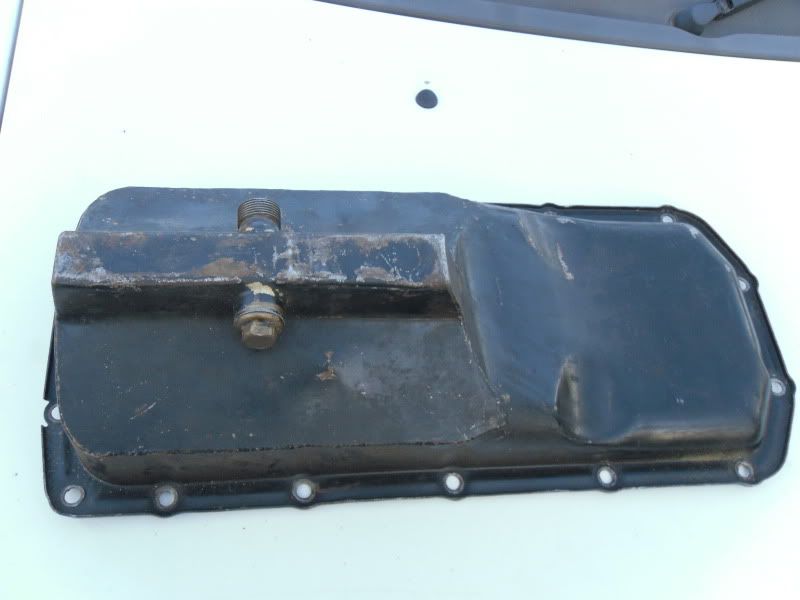
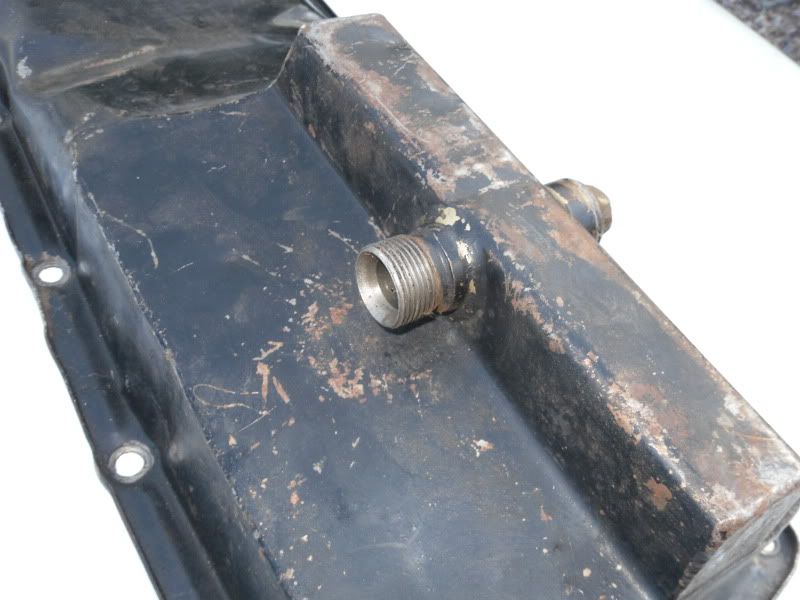
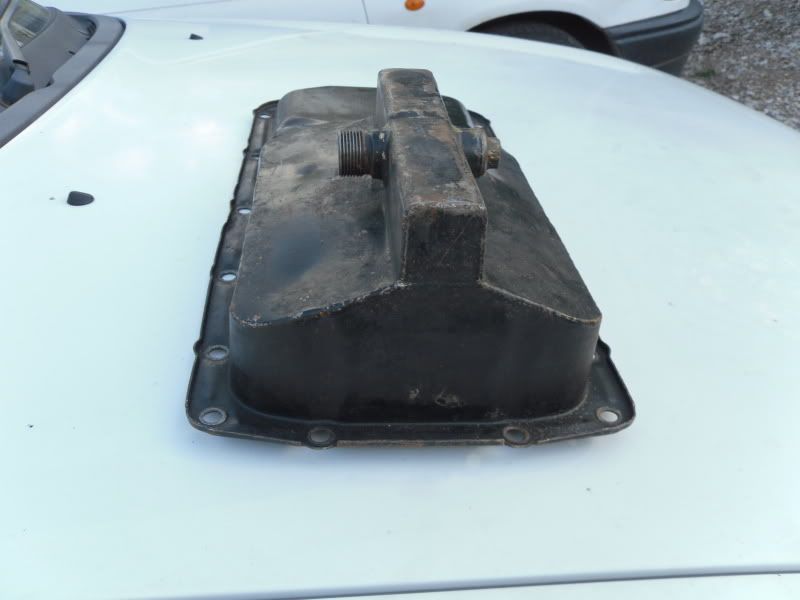
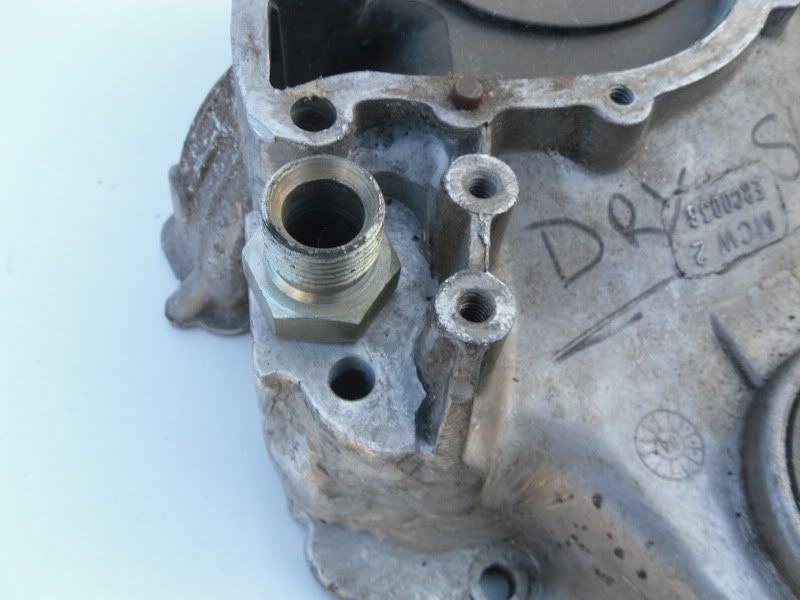
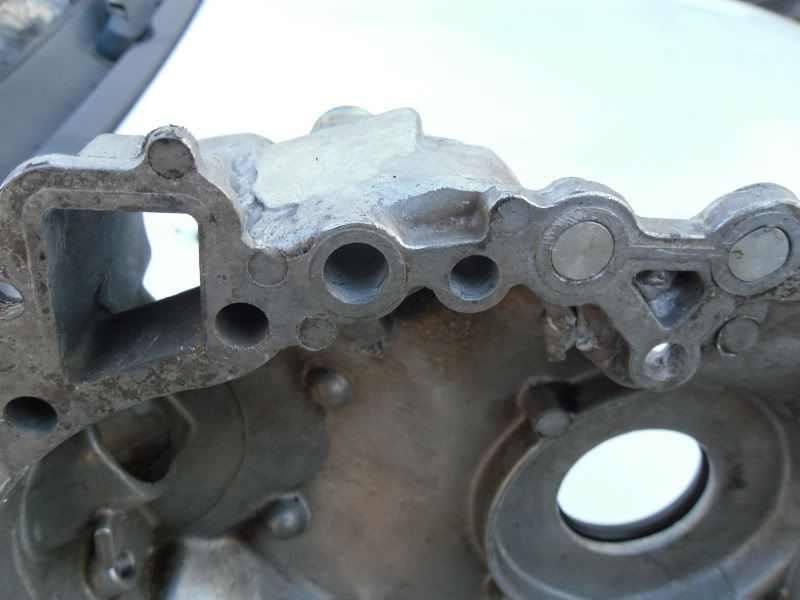
Properly made dry sump pan and modified cover, made from a modified standard pan, but looks very well made in the same ilk as a BDA dry sump would be made, but, it only has one scavence port, will this be enough? Most engines I have built hav had at least two scavenges. Secondly, the cover has had the pump removed, and the port drilled and a oil adaptor fitted for the pressure inlet, in my eyes, as long as this enters the gallery somewhere, it's ok, this is exactly where the std pump would feed anyway so looks good in my eyes.
Look forward to comments................






SD1 Stage Rally car currently under construction, watch this space............



